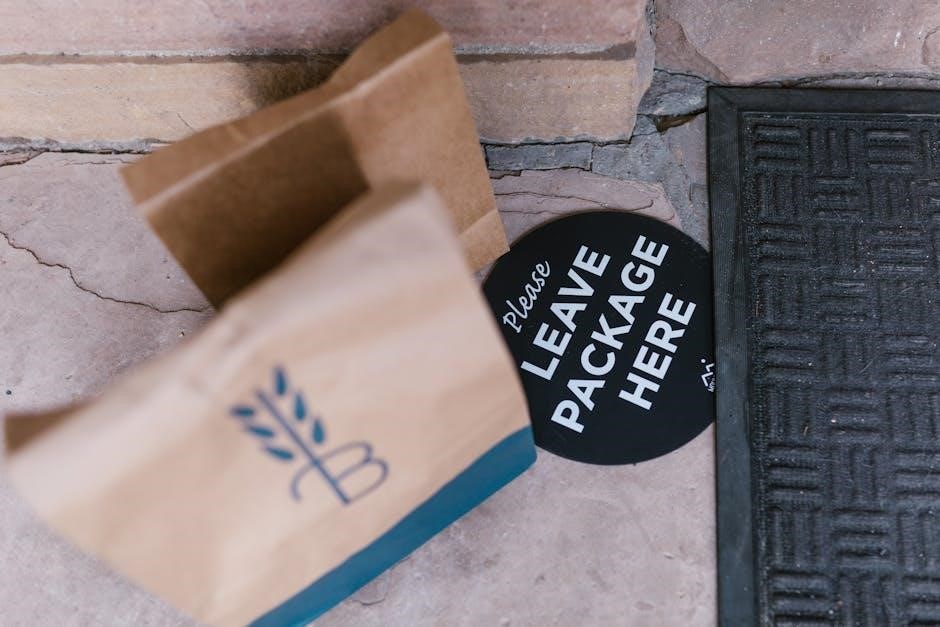zinsser 123 primer instructions

Zinsser 123 Primer is a water-based, versatile primer suitable for interior and exterior projects. It offers excellent adhesion, durability, and resistance to mold and mildew, making it a popular choice for professionals and DIYers alike. Known for its low odor and quick drying time, Zinsser 123 is ideal for various surfaces, ensuring a smooth and long-lasting finish.
What is Zinsser 123 Primer?
Zinsser 123 Primer is a water-based, acrylic formula designed for interior and exterior use. It serves as both a primer and sealer, offering excellent adhesion and durability. Known for its low odor and quick drying time, this primer is ideal for various surfaces, including wood, metal, and drywall. It is highly effective at blocking stains and resisting mold and mildew. With its versatile application capabilities and strong performance, Zinsser 123 Primer is a favorite among professionals and DIYers. It is also suitable for use on previously painted surfaces, making it a reliable choice for a wide range of projects. Its water-based composition ensures easy cleanup and minimal environmental impact, while its acrylic properties provide a flexible and long-lasting finish.
Benefits of Using Zinsser 123 Primer
Zinsser 123 Primer offers exceptional adhesion to a wide range of surfaces, ensuring a strong bond for paint. It excels at sealing porous materials and blocking stains, creating a uniform base for topcoats. The primer is low in volatile organic compounds (VOCs), reducing strong odors and making it safer for indoor use. Its quick-drying formula allows for fast project turnaround, with most surfaces ready for painting within 30 minutes to an hour. Additionally, Zinsser 123 is water-based, making cleanup easy with just soap and water. Its mildew-resistant properties make it ideal for bathrooms, kitchens, and exterior projects. Overall, it provides a durable, versatile solution for various painting needs, enhancing both appearance and longevity of the finish.
A Brief History of Zinsser Primers
Zinsser primers have a rich history dating back to the mid-20th century when the company first began developing innovative painting solutions. Founded in the 1940s, Zinsser quickly became renowned for creating primers that excelled in adhesion and stain blocking. Over the years, the company expanded its range to cater to various surfaces and painting challenges, introducing products like the popular 123 Primer. Known for their commitment to quality and innovation, Zinsser primers have earned a reputation for durability and effectiveness, making them a favorite among both professionals and DIY enthusiasts. Their continuous evolution ensures that Zinsser remains at the forefront of the painting industry, providing reliable solutions for diverse painting needs.

Surface Preparation for Zinsser 123 Primer
Proper surface preparation ensures optimal adhesion and results. Clean thoroughly, removing dirt, grease, and wax. Repair damaged areas and sand rough surfaces. Deglaze old finishes and ensure surface is dry before priming.
Cleaning the Surface Before Application
Cleaning the surface thoroughly is essential for proper primer adhesion. Start by removing dirt, grime, grease, and wax using a mild detergent or a specialized cleaner. Scrub the surface with a soft brush or sponge, then rinse with clean water. For tougher stains or mildew, use a bleach solution (1 part bleach to 3 parts water) and scrub thoroughly. Allow the surface to dry completely before applying the primer. Any contaminants left behind can compromise the primer’s performance and lead to adhesion issues. Ensure the surface is free of dust and debris for the best results. Proper cleaning ensures a strong bond between the primer and the substrate, promoting durability and a smooth finish.
Repairing Damaged Surfaces
Before applying Zinsser 123 Primer, damaged surfaces must be repaired to ensure proper adhesion and a smooth finish. Fill cracks, holes, and gaps with a suitable spackling compound or joint compound. Allow the filler to dry completely, then sand the repaired areas until smooth. For surfaces with loose or peeling paint, scrape off the damaged paint and sand the area to create a stable base. If dealing with water damage or stains, ensure the surface is dry and secure. Remove any old adhesives or wallpaper residue using a scraper or adhesive remover. Once repairs are complete, sand the entire surface to ensure evenness and a strong bond with the primer. Proper repair ensures optimal performance of Zinsser 123 Primer.
Sanding and Smoothing the Surface
Sanding and smoothing the surface is essential for ensuring proper adhesion of Zinsser 123 Primer. Begin by using a medium-grit sandpaper (120-150 grit) to remove any imperfections, such as rough spots or old paint. Sand in a circular motion, applying light to moderate pressure. After sanding, wipe away dust and debris with a clean, damp cloth or vacuum. For surfaces with minor imperfections, switch to a finer grit (220-240) for a final smoothing. Avoid over-sanding, as this can create unnecessary scratches. A well-sanded surface ensures the primer adheres evenly and effectively, leading to a professional finish. Sanding is a critical step that directly impacts the primer’s performance and the final result of your project.

Application Instructions for Zinsser 123 Primer
Apply Zinsser 123 Primer using rollers, brushes, or sprayers. Work in sections, maintaining even coverage. Allow to dry according to manufacturer’s instructions for optimal results.
Tools Required for Application
To apply Zinsser 123 Primer effectively, you’ll need the right tools for a smooth, even finish. Start with high-quality rollers or extension poles for large surfaces, and use synthetic brushes for detailed work or trim. A paint tray is essential for holding and loading the primer. For spray application, use an HVLP sprayer or airless sprayer, following manufacturer guidelines. A drop cloth or tarp is recommended to protect floors and furniture from drips. Optional tools include sanding blocks for surface preparation and lint-free rags for cleaning. Always ensure tools are clean and dry before use to prevent contamination. Proper tool selection ensures professional results and minimizes waste. Clean tools thoroughly with water after use for reuse.
Step-by-Step Application Process
Start by stirring Zinsser 123 Primer thoroughly before use to ensure even consistency. Apply the primer using a high-quality roller for large areas or a synthetic brush for smaller, detailed surfaces. Work in sections, spreading evenly in thin, overlapping coats. For best results, maintain a wet edge to prevent lap marks. Allow the first coat to dry completely, typically 30 minutes to an hour, depending on temperature and humidity. If needed, lightly sand the surface to smooth any imperfections before applying a second coat. Ensure the primer is fully dry according to instructions before painting. Avoid applying in direct sunlight or high winds to maintain even coverage. Follow all safety precautions and manufacturer guidelines for optimal results. Clean tools with water immediately after use.
Drying Time and Conditions
Zinsser 123 Primer typically dries to the touch within 30 minutes to 1 hour, depending on temperature and humidity. Full cure, where it is ready for painting, usually takes 1 hour to 90 minutes under ideal conditions. Ideal application conditions are temperatures between 50°F (10°C) and 90°F (32°C) with low humidity. Avoid applying in direct sunlight or high humidity, as this can slow drying. Ensure good ventilation to accelerate drying. If conditions are less than optimal, drying time may be extended. Always wait until the primer is completely dry before applying paint. Proper drying ensures strong adhesion and a durable finish. Follow manufacturer guidelines for best results. Clean tools with soap and water after use. Allow surfaces to cure fully before exposing to moisture or heavy use. This ensures long-lasting performance. Proper drying is key to a successful project. Always monitor environmental factors during application. Adjust application schedules if necessary to accommodate drying needs. This ensures the best outcome for your painting project. Properly dried primer provides a strong foundation for paint adhesion and durability. Always adhere to recommended drying times for optimal results.

Compatibility of Zinsser 123 Primer
Zinsser 123 Primer is highly versatile, compatible with wood, metal, drywall, and masonry. It works seamlessly with water-based, oil-based, and epoxy paints, ensuring superior adhesion and durability.
Surfaces Suitable for Application
Zinsser 123 Primer is designed for use on a wide range of surfaces, including wood, metal, drywall, and masonry. It is ideal for both interior and exterior projects, adhering well to properly prepared surfaces. The primer works effectively on new or previously painted surfaces, making it versatile for renovation and new construction projects. It is also suitable for use on PVC, plastic, and unsealed tiles, ensuring a strong bond for subsequent paint layers. This primer is particularly effective on surfaces with minor imperfections, providing a smooth base for painting. Its compatibility with various materials makes it a reliable choice for diverse projects, enhancing paint adhesion and durability across different substrates.
Compatibility with Different Paint Types
Zinsser 123 Primer is compatible with a variety of paint types, including water-based (latex, acrylic), oil-based (alkyd), and epoxy paints. Its universal formulation ensures excellent adhesion and a durable finish regardless of the paint used. It works seamlessly with both interior and exterior paints, making it a versatile choice for diverse projects. The primer is particularly effective under high-hiding paints, such as enamels and acrylics, and is suitable for use with stains and varnishes. Its compatibility extends to specialized coatings, such as anti-mold paints, ensuring optimal performance in different environments. This flexibility makes Zinsser 123 Primer a reliable option for projects requiring multiple paint types or finishes.
Using Zinsser 123 Primer on Wood
Zinsser 123 Primer is highly effective for use on wood surfaces, providing excellent adhesion and a strong bond for paint. It works well on both interior and exterior wood, including trim, furniture, and flooring. For optimal results, lightly sand the wood to create a smooth surface and remove any splinters or rough edges. Knots and cracks should be filled with a wood filler before priming. The primer is particularly effective at blocking tannin stains from bleeding through paint, ensuring a uniform finish. It is also suitable for use on weathered or aged wood, restoring its surface for painting. Zinsser 123 Primer is water-based, making it easy to clean up and ideal for projects where oil-based products are not desired.
Using Zinsser 123 Primer on Metal
Zinsser 123 Primer is an excellent choice for metal surfaces, providing a durable and rust-resistant base for paint. It adheres well to steel, aluminum, and other metals, making it ideal for both interior and exterior projects. Before application, ensure the metal surface is clean and free of grease, oil, and rust. Lightly sanding the surface can improve adhesion. The primer is particularly effective at sealing and protecting metal from corrosion, ensuring long-lasting results. It is water-based, making it easier to apply and clean up compared to oil-based alternatives. Zinsser 123 Primer is suitable for use on metal doors, gates, and machinery, as well as for restoring weathered or corroded metal surfaces. Its quick-drying formula allows for fast project completion.
Using Zinsser 123 Primer on Drywall
Zinsser 123 Primer is an ideal choice for drywall surfaces, offering excellent adhesion and a smooth finish. It is particularly effective at concealing joint compounds, nail holes, and other imperfections common in drywall. Before application, ensure the surface is clean, dry, and free of dust or debris. Light sanding of the drywall can further enhance primer adhesion. The primer is water-based, making it easy to apply with a roller or brush. It dries quickly, typically within 30 minutes to an hour, and is ready for painting with latex or oil-based paints. Zinsser 123 Primer is also mildew-resistant, making it suitable for drywall in bathrooms or kitchens. It ensures a uniform base coat and promotes long-lasting paint durability on drywall surfaces.
Using Zinsser 123 Primer on Masonry
Zinsser 123 Primer is highly effective for use on masonry surfaces, including concrete, brick, and stucco. Its water-based formula adheres well to porous materials, ensuring a strong bond for subsequent paint layers. Before application, masonry surfaces should be clean, dry, and free of dust, chalk, or efflorescence. Lightly brush or pressure-wash the surface to remove contaminants. For best results, apply the primer with a roller or sprayer, working in sections to maintain even coverage. Zinsser 123 Primer dries quickly, typically within 30 minutes to an hour, and is ideal for exterior projects due to its weather-resistant properties. It also resists mold and mildew, making it perfect for masonry surfaces exposed to moisture. This primer ensures a durable and long-lasting finish on masonry surfaces.

Specialized Uses of Zinsser 123 Primer
Zinsser 123 Primer is versatile, excelling in stain blocking, exterior projects, and fire-damaged surfaces. Its strong adhesion and durability make it ideal for wood, metal, and drywall. Perfect for interior and exterior use, this primer ensures a reliable foundation for various projects.

Stain Blocking with Zinsser 123 Primer
Zinsser 123 Primer is renowned for its exceptional stain-blocking properties, effectively covering tough stains like water marks, smoke, and grease. Its advanced formula creates a strong barrier, preventing stains from bleeding through paint. Ideal for surfaces with discoloration, it ensures a uniform base coat. Compatible with both oil-based and water-based paints, it enhances adhesion and promotes a smooth finish. Perfect for interior and exterior projects, Zinsser 123 Primer is a reliable choice for hiding imperfections and achieving professional results. Its quick-drying nature allows for same-day topcoating, making it a time-saving solution for homeowners and professionals alike. Low odor and VOC levels add to its convenience and safety.
Using Zinsser 123 Primer for Exterior Projects
Zinsser 123 Primer is highly effective for exterior projects due to its durability and weather-resistant properties. It adheres well to various outdoor surfaces, including wood, metal, and masonry, providing a strong foundation for paint. The primer resists peeling, cracking, and fading caused by UV exposure and moisture. It also inhibits mold and mildew growth, making it ideal for exterior walls, fences, and decks. For best results, ensure surfaces are clean and dry before application. Zinsser 123 Primer dries quickly, usually within 30 minutes to an hour, and can be recoated in about an hour. Its low odor and VOC levels make it suitable for outdoor use without causing strong fumes. This primer is a versatile and reliable choice for exterior projects, ensuring long-lasting protection and a professional finish.
Using Zinsser 123 Primer on Fire-Damaged Surfaces
Zinsser 123 Primer is an excellent choice for fire-damaged surfaces due to its exceptional stain-blocking properties. It effectively covers soot, smoke, and water stains, restoring surfaces to a paintable condition. Before application, ensure the surface is clean and free of debris. Use a wire brush or pressure washer to remove loose soot and ash. Zinsser 123 Primer adheres well to fire-damaged wood, drywall, and masonry, sealing in stains and odors. Apply a thin coat, allowing it to dry completely before painting. Its durability ensures a strong bond between the damaged surface and the final paint finish, making it ideal for fire restoration projects. This primer is a reliable solution for revitalizing surfaces affected by fire damage.

Health and Safety Considerations
When using Zinsser 123 Primer, ensure good ventilation and wear protective gear like gloves and goggles. Follow safety guidelines to avoid health risks and ensure safe application.
VOC Levels and Safety Precautions
Zinsser 123 Primer has low VOC (Volatile Organic Compound) levels, making it safer for indoor use compared to high-VOC products. However, proper safety precautions are essential. Always work in a well-ventilated area to prevent inhalation of fumes. Wear protective gloves, safety goggles, and a dust mask to minimize exposure. Avoid skin contact, as it may cause irritation. Keep the primer away from open flames or sparks, as it is flammable. Store in a cool, dry place, out of reach of children and pets. Refer to the Safety Data Sheet (SDS) for detailed handling and emergency procedures. Ensure thorough cleanup with soap and water to prevent residue buildup. Proper safety measures ensure a safe and effective application process.
Protective Equipment Recommendations
When working with Zinsser 123 Primer, it is essential to wear appropriate protective equipment to ensure safety and avoid exposure to harmful chemicals. Always wear latex gloves to prevent skin contact and potential irritation. Eye protection, such as goggles or safety glasses, is crucial to safeguard against splashes or accidental spills. A dust mask or respirator is recommended to minimize inhalation of fumes and VOCs (volatile organic compounds). Additionally, ensure good ventilation in the workspace by opening windows or using fans to reduce the concentration of fumes. Wearing long sleeves and work clothes can also protect skin from accidental splatters. Always follow the manufacturer’s safety guidelines for optimal protection.
Disposal and Cleanup Instructions
Proper disposal and cleanup are essential when working with Zinsser 123 Primer. Allow leftover primer to harden completely before disposing of it in a sealed container with the lid. Do not pour primer down drains or gutters, as it can harm the environment. For cleanup, wash tools and surfaces with mild soap and warm water immediately after use. If primer dries on tools, use a small amount of mineral spirits to remove it. Contaminated rags should be disposed of in a sealed, fire-resistant container. Always wear gloves during cleanup to avoid skin irritation. Ensure good ventilation and avoid inhaling fumes. Follow local regulations for disposal to maintain environmental safety.

Comparison with Other Zinsser Primers

Zinsser offers several primers, each with unique features. The 123 primer is water-based, while BIN is shellac-based for heavy stains. 123 Plus offers enhanced adhesion and durability.
Zinsser 123 vs. BIN Primer
Zinsser 123 and BIN Primer are both high-quality products from the same brand, but they cater to different needs. Zinsser 123 is a water-based primer known for its versatility and low VOC levels, making it ideal for interior and exterior projects. It dries quickly and adheres well to multiple surfaces, including wood, metal, and drywall. On the other hand, BIN Primer is a shellac-based, oil-based formula designed for severe staining and odor blocking, such as fire or water damage. While Zinsser 123 is more user-friendly with easy clean-up, BIN Primer offers superior stain-blocking capabilities but requires solvent-based clean-up. Choose Zinsser 123 for general-purpose priming and BIN for heavy-duty stain coverage.
Zinsser 123 vs. 123 Plus Primer
Both Zinsser 123 and 123 Plus primers are high-performance products, but they cater to slightly different needs. Zinsser 123 is a water-based primer known for its versatility and low VOCs, making it ideal for interior and exterior projects on surfaces like wood, metal, and drywall. It dries quickly, typically within 30 minutes to an hour, and provides a strong bond for paint. In contrast, Zinsser 123 Plus is an enhanced version with improved adhesion and stain-blocking capabilities, especially on challenging surfaces such as metal and masonry; It also offers better resistance to mold and mildew, making it suitable for high-humidity areas. While both primers share similar application methods, the 123 Plus is recommended for projects requiring extra durability and superior stain coverage.
Zinsser 123 vs. Oil-Based Primers
Zinsser 123 Primer differs significantly from oil-based primers in composition and application. Unlike oil-based primers, Zinsser 123 is water-based, making it easier to clean up with soap and water. It also has lower volatile organic compounds (VOCs), reducing strong fumes and environmental impact. Oil-based primers, while durable, require solvents for cleanup and have longer drying times. Zinsser 123 dries faster, typically within 30 minutes to an hour, allowing for quicker recoating. However, oil-based primers may offer better stain blocking for certain surfaces. For projects requiring flexibility and fast results, Zinsser 123 is ideal, while oil-based primers are often chosen for heavy-duty or exterior applications where moisture resistance is critical. The choice depends on the specific needs of the project and surface type.

Troubleshooting Common Issues
Common issues with Zinsser 123 Primer include uneven coverage, peeling, or adhesion problems. Ensure proper surface preparation, reapply primer if needed, and sand lightly before painting.
Common Problems During Application
When applying Zinsser 123 Primer, common issues may arise if proper preparation and instructions are not followed. One frequent problem is uneven coverage, which can occur if the surface is not cleaned or sanded adequately. Another issue is peeling or poor adhesion, often caused by insufficient drying time between coats or applying the primer to a damp surface. Additionally, streaks or brush marks may appear if the primer is applied too thinly or with the wrong tool. To avoid these problems, ensure the surface is dry, clean, and properly sanded. Use the recommended tools, such as a high-quality brush or roller, and apply thin, even coats, allowing the primer to dry completely before recoating.
Solving Adhesion Issues
Adhesion issues with Zinsser 123 Primer can occur due to improper surface preparation or environmental factors. To address this, ensure the surface is clean, dry, and free of grease or wax. Lightly sanding the surface can improve primer adhesion. If adhesion problems persist, check for contamination or old paint flaking off. Applying a second coat of primer may be necessary. For severe cases, consider using a more specialized primer like Zinsser BIN for better grip. Always allow the primer to dry completely before testing adhesion. If issues remain, consult the product’s technical data sheet or contact Zinsser support for further guidance. Proper preparation and application are key to achieving a strong bond.
Addressing Drying Time Concerns
Zinsser 123 Primer is known for its fast-drying formula, but issues can arise in certain conditions. If the primer is not drying as expected, check the ambient temperature and humidity levels. The ideal range is between 50°F and 90°F (10°C and 32°C) with low humidity. Ensure good airflow by opening windows or using fans to speed up evaporation. Avoid applying thick coats, as this can extend drying time; instead, use thin, even layers. If the surface is porous or uneven, it may absorb the primer more slowly. Allow the recommended 30 minutes to 1 hour before recoating or painting. For persistent issues, consult the product instructions or contact Zinsser support for guidance.
Zinsser 123 Primer is an excellent choice for various projects, offering reliability and durability. It enhances paint adhesion and ensures a professional finish, perfect for DIYers and professionals alike.
Final Thoughts on Zinsser 123 Primer
Zinsser 123 Primer is a versatile and reliable choice for various painting projects, offering excellent performance across different surfaces. Its ability to block stains, adhere to challenging materials, and enhance paint durability makes it a standout product. Whether you’re working on wood, metal, drywall, or masonry, this primer provides a strong foundation for a professional finish. Its ease of use and quick drying time add to its appeal, making it suitable for both DIY enthusiasts and professionals. With its compatibility with multiple paint types and specialized uses, Zinsser 123 Primer is a top choice for ensuring long-lasting results. For anyone seeking a high-quality primer, Zinsser 123 is an excellent option to consider.
Recommended Projects for Zinsser 123 Primer
Zinsser 123 Primer is ideal for a variety of projects due to its versatility and effectiveness. It’s perfect for interior and exterior painting tasks, such as refreshing walls, cabinets, and furniture. Use it on surfaces like wood, metal, and drywall to ensure a smooth, even finish. For outdoor projects, it’s great for priming fences, decks, and siding. It’s also excellent for covering stains and water marks on ceilings or walls. Additionally, it’s suitable for upcycling old furniture or appliances, giving them a fresh, professional look. Whether you’re tackling a small DIY project or a large renovation, Zinsser 123 Primer is a reliable choice to achieve durable, long-lasting results.